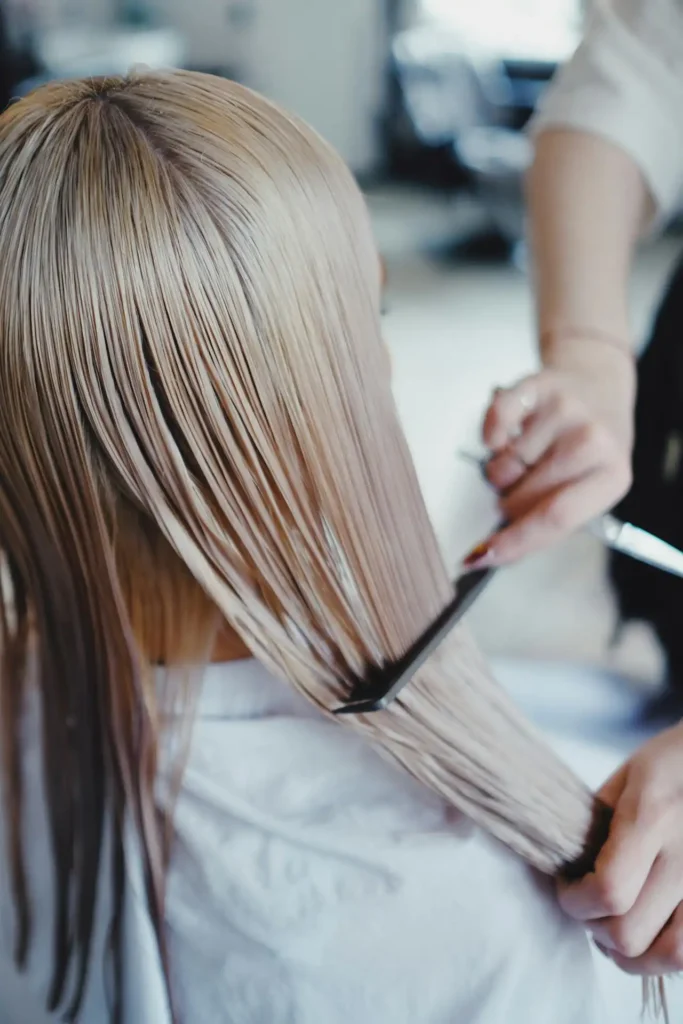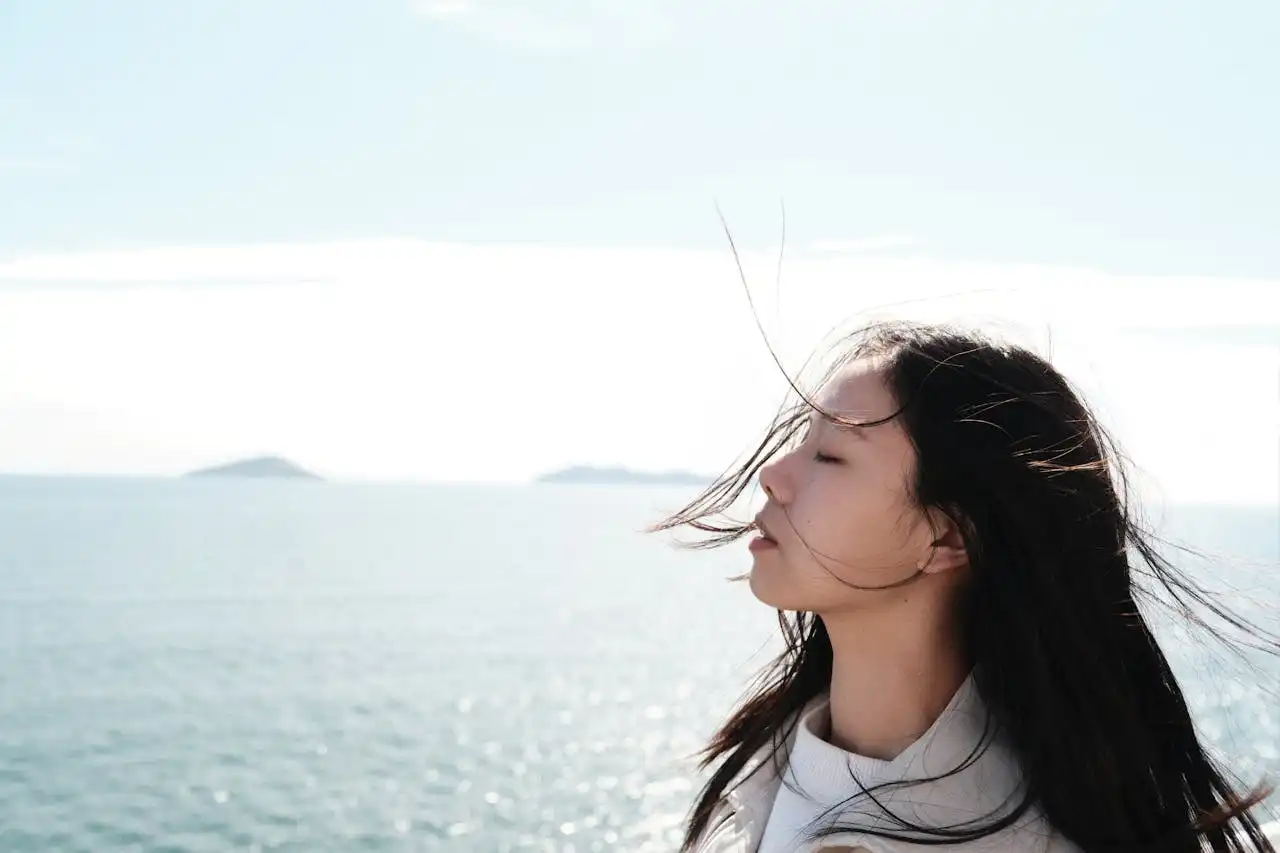How to Air-Dry Your Hair Without the Frizz
You’ve probably experienced that frustrating moment when you skip the blow dryer, hoping for naturally gorgeous hair, only to end up with a frizzy mess.
Air-drying doesn’t have to mean sacrificing smooth, beautiful locks. With the right techniques and products, you can achieve salon-worthy results while letting your hair dry naturally.
Start with the Right Foundation

Your air-drying success begins in the shower. The products you use and how you treat your wet hair set the stage for everything that follows.
Choose a sulfate-free shampoo that won’t strip your hair of its natural oils. These gentler formulas help maintain your hair’s moisture barrier, which is crucial for preventing frizz.
You’ll notice the difference immediately when your hair feels softer and more manageable after washing.
Apply conditioner from mid-length to ends, focusing on the areas that tend to get driest. This step creates a protective layer that smooths the hair cuticle and reduces friction.
Leave it on for at least two minutes to allow the moisturizing ingredients to penetrate your hair shaft.
Consider using a deep conditioning treatment once a week. Your hair absorbs extra moisture during this process, which helps create a smoother foundation for air-drying.
The investment in healthy, well-moisturized hair pays off with consistently better results.
Master the Art of Gentle Drying
How you remove excess water from your hair makes a dramatic difference in your final results. Traditional towel-drying methods can rough up the hair cuticle and create instant frizz.
Replace your regular bath towel with a microfiber towel or cotton t-shirt. These materials are much gentler on your hair and absorb water without causing friction.
You’ll be amazed at how much smoother your hair looks right from the start. Gently press the towel against sections of your hair instead of rubbing vigorously.
Work from the roots down to the ends, squeezing out water without disturbing the hair’s natural pattern.
This technique preserves your hair’s structure and prevents the cuticle damage that leads to frizz.
Pat your hair in sections, giving extra attention to the areas that hold the most water.
Take your time with this step – rushing through the drying process often leads to the frizzy results you’re trying to avoid.
Apply Products While Hair is Soaking Wet
The timing of product application is absolutely critical for frizz-free air-drying. Your hair should still be dripping wet when you apply your styling products.
Start with a leave-in conditioner to add an extra layer of moisture and protection. Distribute it evenly through your hair using your fingers or a wide-tooth comb.
This product acts as a base layer that helps seal the hair cuticle and provides ongoing hydration as your hair dries.
Follow with a heat protectant, even though you’re not using heat tools. These products often contain ingredients that smooth the hair and provide humidity protection.
Apply it from mid-length to ends, focusing on the most porous areas of your hair. Choose a styling product based on your hair type and desired results.
Curl creams work well for wavy and curly hair, while smoothing serums are perfect for straight to slightly wavy textures. Apply products in small sections to ensure even distribution.
Use the Plopping Technique
Plopping is a game-changing method that encourages your hair’s natural texture while preventing frizz. This technique works especially well for wavy and curly hair types.
Lay a cotton t-shirt or microfiber towel flat on your bed or a clean surface. Flip your head upside down and gently lower your hair onto the center of the fabric.
The goal is to keep your curls intact while removing excess moisture. This process helps your hair maintain its natural pattern while absorbing excess water.
Wrap the sides of the t-shirt around your head, creating a loose turban. Don’t twist or wring your hair – simply fold the fabric over and secure it gently.
Leave your hair wrapped for 10-20 minutes, depending on how much water you want to remove.
When you unwrap your hair, you’ll notice that your natural texture is more defined and there’s significantly less frizz.
Section and Scrunch for Definition

Working with your hair in sections gives you more control over the final result and helps ensure even drying throughout.
Divide your hair into 4-6 sections, depending on its thickness. Clip the sections you’re not working on to keep them out of the way.
This organization helps you focus on each area and apply products more effectively. Use an upward, squeezing motion rather than a twisting or pulling action.
Scrunch each section gently from the ends toward the roots. This motion encourages your hair’s natural curl pattern and helps distribute products evenly.
You can enhance the scrunching process by using a diffuser attachment on your blow dryer set to the lowest heat and speed settings.
Hold the diffuser stationary at the ends of each section for 10-15 seconds before moving to the next area.
Create the Right Environment
The environment where your hair dries plays a crucial role in preventing frizz. Humidity and air circulation both affect how your hair looks when it’s completely dry.
Choose a room with good air circulation but avoid direct sunlight, which can be damaging to wet hair.
A bathroom with a fan or a bedroom with a ceiling fan provides ideal conditions for even drying. Be patient and let your hair do its work naturally.
If you live in a humid climate, consider using a dehumidifier in the room where you’re drying your hair.
Excess moisture in the air can interfere with the drying process and contribute to frizz formation.
Avoid touching your hair while it dries. Every time you run your fingers through wet hair, you disrupt the cuticle and create opportunities for frizz to develop.
Protect Your Hair Overnight
If you’re air-drying your hair in the evening, taking steps to protect it overnight will help you wake up with better-looking hair.
Sleep on a silk or satin pillowcase to reduce friction while you move during sleep.
These smooth materials allow your hair to glide rather than catch and tangle, which helps preserve your style and prevent morning frizz.
Consider loosely braiding your hair or putting it in a very loose, high ponytail before bed.
These protective styles keep your hair from getting tangled or flattened while you sleep. Make sure any hair ties you use are silk or fabric-covered to prevent damage.
You can also try the “medusa clipping” method, where you clip small sections of your hair up and away from your head using small clips.
This technique keeps your hair elevated and allows air to continue circulating around it while you sleep.
Address Different Hair Types
Different hair textures require slightly different approaches to achieve frizz-free air-drying results.
Fine hair tends to get weighed down easily, so use lighter products and focus on volumizing techniques.
Apply products only to the mid-lengths and ends, avoiding the roots to prevent your hair from looking greasy or flat.
Thick or coarse hair can handle heavier products and benefits from extra moisture.
You might need to use more product than someone with fine hair, and you may want to section your hair into smaller pieces for more thorough application.
Curly hair often requires the most moisture and benefits from gel or curl cream to maintain definition.
The “bowl method” works well for curly hair – this involves dipping sections of hair into a bowl of water mixed with conditioner before applying styling products.
Troubleshoot Common Problems
Even with the best techniques, you might encounter some challenges when learning to air-dry your hair successfully.
If your hair is taking too long to dry, you’re probably starting with hair that’s too wet. Remove more water with your microfiber towel or t-shirt before applying products.
You can also try using slightly less product, as too much can slow down the drying process.
When you notice frizz developing as your hair dries, resist the urge to touch it.
Instead, lightly mist the frizzy areas with water and gently scrunch in a small amount of leave-in conditioner or oil.
If your hair looks flat or lacks volume, try flipping your head upside down periodically while it dries.
You can also lift sections at the roots with your fingers to encourage more volume, but do this sparingly to avoid creating frizz.
Maintain Your Results

Once you achieve great air-dried hair, you want to make it last as long as possible.
Refresh your hair on day two by lightly misting it with water and scrunching in a small amount of leave-in conditioner.
This technique revives your natural texture without having to start the entire process over. Schedule regular trims every 6-8 weeks to keep your ends healthy.
Use a silk or satin scarf to protect your hair when you’re outside in windy or humid conditions.
These materials provide a barrier against environmental factors that can cause frizz while still allowing your hair to move naturally.
Split ends and damaged hair are much more prone to frizz, so maintaining healthy hair is essential for consistently good air-drying results.
Conclusion
Air-drying your hair without frizz is absolutely achievable with the right techniques and patience.
Focus on gentle handling, proper product application, and creating ideal drying conditions for beautiful, natural results.







